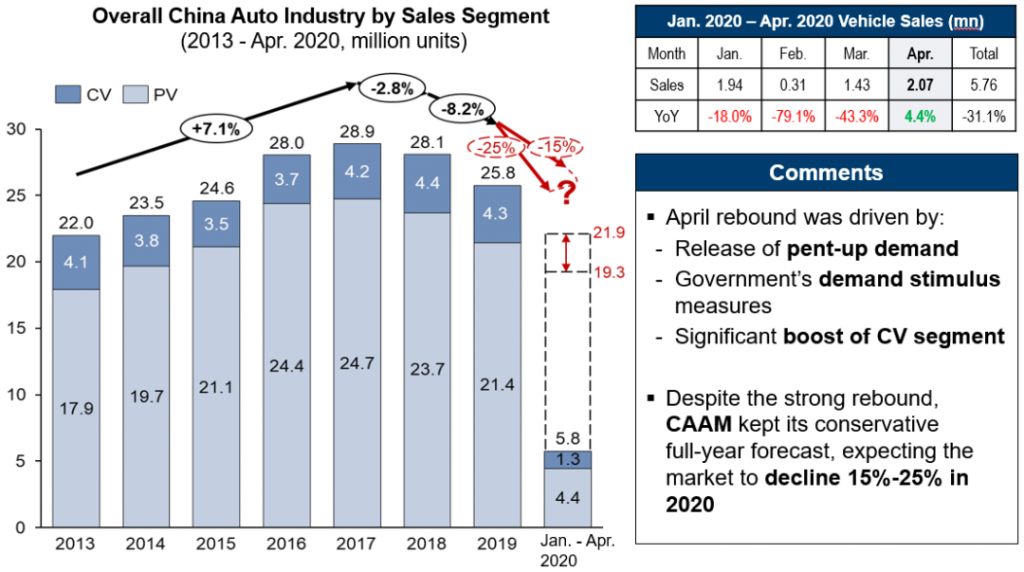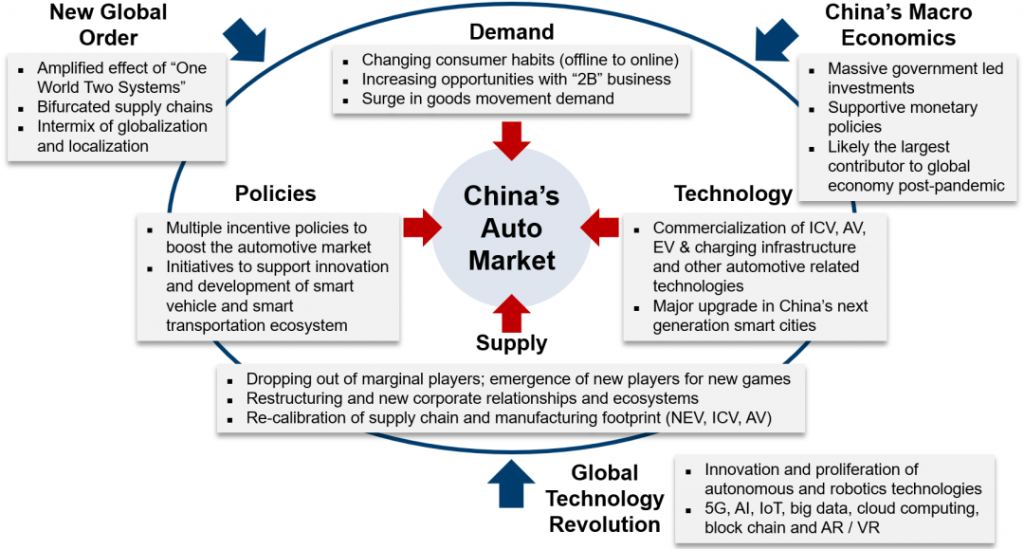To adjust to the rapidly transforming global and local automotive markets, businesses need to visualize future scenarios and potentially realign their strategic focuses. We anticipate three possibilities for the coming year in China’s auto industry. Least likely is a pessimistic scenario, characterized by slow growth in sales and an industry-wide hesitation to invest further. This will also be accompanied by weaker players eventually being squeezed out, whether local or foreign.A slightly more probable and optimistic scenario is that sales pick up and may even begin to grow strongly. Autonomous vehicles (AV) in the goods movement markets thrive, and a healthy volume of investments from new and existing players flow towards these markets and solutions. In this case, a “new game” takes shape around intelligent and connected vehicles, new digital infrastructure and smart cities.However, more likely is a middle-of-the-road scenario, where car sales recover somewhat slowly, to slightly higher than the pre-pandemic level. China’s economy will become receptive to AV, particularly in terms of goods movement as the first step before people movement. New and existing industry players will see and attempt to capture these new opportunities, though a few weak players may be squeezed out. The development in intelligent and connected vehicles, AV, new, digital infrastructure and smart cities will start to gain traction.We will also witness some critical changes and real discontinuities in the future of the industry. First, there will be a significant restructuring process, squeezing out capacity-overhung incumbents and creating new players that cater to new demands and technologies, especially with AV goods movement. As players seek to build their capabilities, new corporate relationships and ecosystems will emerge.Second, market segmentation by product is set to shift dramatically. The industry will gravitate towards connected and intelligent vehicles, especially for goods movement as an entry point before the movement of people. The premium segment will remain strong, and demand will rebound in top-tier cities due to the easing of license plate restrictions and rejuvenation of passenger cars as a safer means of travel.
Third, China’s investment into autonomous technologies and robotics will accelerate the formation of a “China-centric” market, one that features China’s solutions for China’s needs, and over time, to the other “emerging markets” that will find the China model appealing. And lastly, private-public partnerships (PPP) will become the supporting structure for smart infrastructure projects. Namely, as the government seeks capabilities from the private sector, the next generation of smart cities will be backed by a joint effort between local cities, state-owned enterprises, and private companies. PPPs provide an opportunity for both foreign and Chinese private enterprises to add value in the deployment of smart infrastructure.







